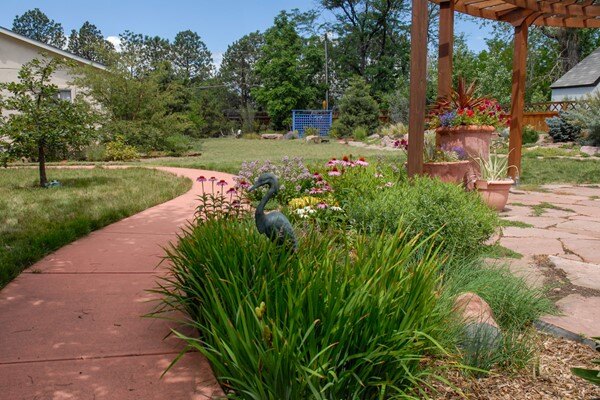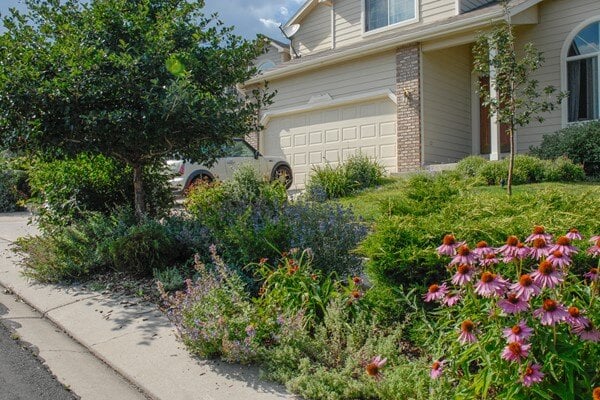Purple Coneflower
Magnus purple coneflower is an improved version of the native eastern purple coneflower. It has nice, mounding green leaves and sturdy flower stalks.
In mid-summer, large purple flowers bloom. They have a large brown cone in the center.
Magnus coneflower has larger petals than the native species, which makes the flowers more noticeable. In addition, the petals droop much less.
.jpg)
.jpg)
.jpg)
.jpg)
.jpg)
.jpg)
.jpg)
Purple Coneflower
Magnus purple coneflower is an improved version of the native eastern purple coneflower. It has nice, mounding green leaves and sturdy flower stalks.
In mid-summer, large purple flowers bloom. They have a large brown cone in the center.
Magnus coneflower has larger petals than the native species, which makes the flowers more noticeable. In addition, the petals droop much less.
Plant details
Botanic Name
Echinacea purpurea 'Magnus'
Pronunciation
ek-in-AY-shee-a pur-PUR-ee-uh
Mature Height
2 to 3 ft.
Mature Spread
18 to 24 in.
Water usage
One Droplet: Water twice per month or less, once established.
Two Droplets: Water about once per week, once established.
Three Droplets: Water about twice per week, once established.
Flower Color
purple-pink
Bloom time
mid-summer
Colorado Native
No
Natural Habitat
species is native to central plains to southeast United States
Light Requirements
sun
Cold Hardiness
USDA zones 4-9
Performance
These perform well at the Water Wise Demonstration Garden. The flowers are beautiful and showy, plus birds eat the seed in fall and winter. They grow best in the moderate water zone. If the plants dry out too much, the leaves wilt.
Maintenance
Purple coneflower should be trimmed to the ground in early spring. After flowering, the central "cone" can be left to provide winter interest and seed for birds, if desired.
See in a landscape
With a yard this big, designing for low maintenance and water conservation can be a real challenge. But this homeowner and garden enthusiast was up for the challenge. A large patio was installed to both accommodate outdoor entertaining needs and stay in scale with the large size of the backyard. The beds surrounding the patio are planted with flowering perennials adapted to our climate, watered with drip irrigation and mulched to retain moisture. Because the grass in this yard has only occasional foot traffic from visiting grand kids, part of the Kentucky bluegrass (darker green) was kept and the rest was converted to blue grama (lighter green). However, after experiencing the benefits of blue grama for a few years, the homeowners have decided to convert the entire grass area to the native blue grama. To access the gate to the alley, they mow a path in the tall blue grama.
The owners of this landscape are in the process of shrinking the bluegrass and replacing it with plants better suited for Colorado. The front yard of this north Colorado Springs residence has been modified by renovating the parkway to feature a small tree, a couple shrubs and flowering perennials that give instant curb appeal. The backyard is in process with an end goal of shrinking the turfgrass area and creating large planting beds along the perimeter of the yard that will feature xeric plants. This is a great example of working in phases and thinking through the project a little bit at a time.


.jpeg)
.jpeg)
.jpeg)
.jpeg)
.jpeg)
.jpeg)
.jpeg)
.jpeg)
.jpeg)
.jpeg)